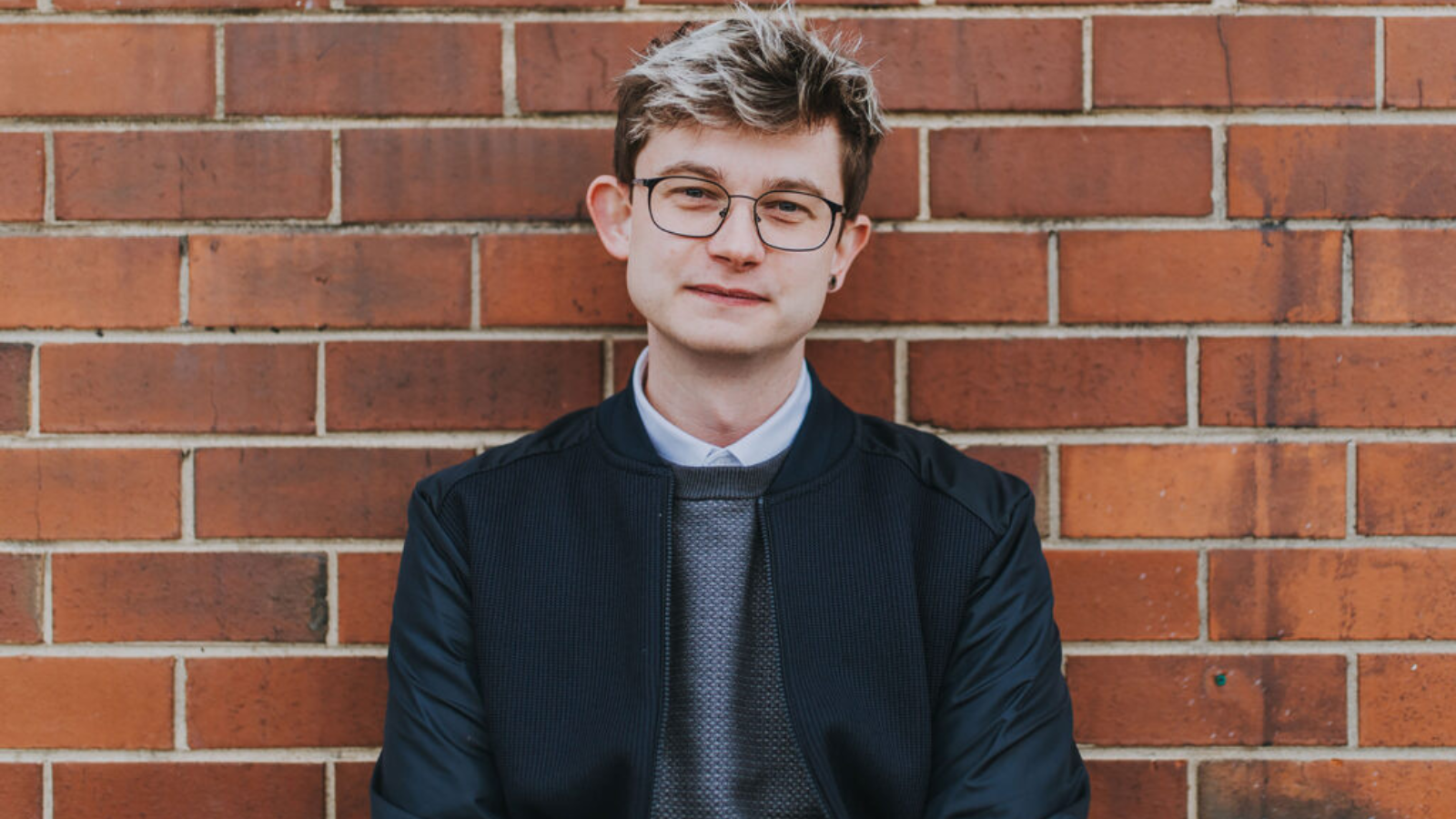Ahead of Jay Carmichael’s Melbourne City Reads event with Melbourne Writers Festival, the author tells us about accessing one of Australia’s most significant research collections for LGBTQIA+ histories, the desire to archive the lived experiences of 1950s queer communities, and the significance of home.

There is a strong focus on regional Victoria both in Marlo, and in your first book Ironbark. You grew up in Waaia, regional Victoria, and now live in Melbourne. Does writing about regional Victoria change your perspective or feelings about it?
While Markus, Ironbark’s protagonist, never leaves his rural home, Christopher, Marlo’s protagonist, does. My home, Waaia, is on Pangerang country, not far from the Tongala (Murray) River, north-east Victoria. I, like Christopher, left home to pursue something I could not access — higher education. It wasn’t until I moved to Melbourne that I realised how much the landscape around the Tongala has moulded how I see and understand myself and my place in Australia. So, I write about these places because they are a part of my heart.
What was the research process like for Marlo?
Until 1981 in Victoria it was illegal for men to have intimate, sexual relationships with other men. Because personal photographs and love letters were often used as evidence by police to convict someone of ‘gross indecency’, owners of these items usually destroyed them. This has left an archival ‘gap’ — an absence of the day-to-day life of gay men. There were two parts to the research for Marlo: 1) analysing the archives to glean an understanding of mid-century sociocultural norms related to homosexuality; and, 2) weaving my own experiences of homophobia and discrimination with these mid-century sociocultural norms in order to imagine what life was like for gay men living in the 1950s.
Did you know from the outset that you wanted to include historic photographs, archival references and footnotes?
After showing some photographs of 1940s and 1950s kamp house parties to my editor, we decided together that including these — and photographs of kamp places (such as 123 Swanston Street and a beat) — was essential in reclaiming the world Morgan and Christopher lived in. Similarly, by writing love letters between Christopher and Morgan and including these alongside actual photographs, I was determined to create an archive — albeit fictional — in which these two men were represented. (NB: ‘kamp’ is a mid-century word akin to ‘queer’ and a ‘beat’ is a public place where men meet other men for sex.)
Some of the images included in Marlo were reproduced from the Australian Queer Archives. Can you tell us about this resource and your experience of using it for your book?
Now located at the Victorian Pride Centre, the Australian Queer Archives (AQuA) first started collecting material in 1978. AQuA conserves the stories of lesbian, gay, bisexual, trans and gender diverse, intersex, queer, Brotherboy, and Sistergirl Australians. To me, AQuA — in both its purpose and its actions — represents how queer people have, for centuries, handed down and shared our heritage and culture through connecting people and places within our community to each other. I’ll give an example. When I first approached AQuA, the formidable historian and former AQuA president Graham Willett shared the Tommy McDermott collection of kamp photographs, which sparked Marlo, with me. Graham also showed me the book Did you meet and malagas? A homosexual history of Australia’s tropical capital, through which I met Dino Hodge. Dino shared his book Colouring the Rainbow: Blak Queer and Trans perspectives: life stories and essays by First Nations people of Australia and introduced me to Peter Waples-Crowe, a Ngarigo visual and performance-based artist. Both Peter and Dino were fundamental to the writing of Marlo, and so generous with their time and thoughtful criticism. Without AQuA, and all the knowledge, heritage, and culture it and its people hold, I would not have met these people. Without these people, whose stories AQuA collects and preserves, I would not have been able to finish this book.
Were there any surprises from your research? Were these facts included in Marlo?
Just a bunch of small, dumb facts (particularly about the zoo) that stuck. Animals at Melbourne Zoo used to be kept in concrete cages with metal bars on the front. You could purchase a bag of food to feed the animals with, but you were not allowed to handfeed them. There was a tourist train at the zoo, too, which took kids round the cages. As well as general, day-to-day life facts. Pubs stopped serving alcohol at six o’clock in the evening, but you could brew your own. You could buy a house on an average wage. Washing day was usually Monday. But the most powerful surprise was the Tommy McDermott collection of kamp photographs, already mentioned. Many of these show young men crossdressing at kamp house parties — always with the blinds drawn. These important artefacts are proof of a thriving queer culture in the 1940s and 1950s, despite the illegality of homosexuality.
You end the novel on a bit of a cliffhanger. Is there any possibility of continuing Christopher’s story in future work?
It’s intriguing that both Marlo and Ironbark end with a decision needing to be made, which strongly suggests I’m an indecisive person.
Jay Carmichael will appear in conversation with Dennis Altman on Tuesday 6 September at the Wheeler Centre. This event is presented in partnership with Melbourne Writers Festival as part of the Melbourne City Reads series generously supported by George and Rosa Morstyn. Bookings are essential and tickets are available now.
Related Posts

Read
Anne-Marie Te Whiu Receives The Next Chapter Alumni Poetry Fellowship
2 Apr 2024

Read
What's on in April: Resident Organisation Round Up
28 Mar 2024

Read
Blak & Bright First Nations Literary Festival returns in 2024
7 Mar 2024

Read
What's on in March: Resident Organisation Round Up
29 Feb 2024

Read
Hot Desk Extract: International
23 Feb 2024

Read
Hot Desk Extract: The Rooms
23 Feb 2024
Share this content